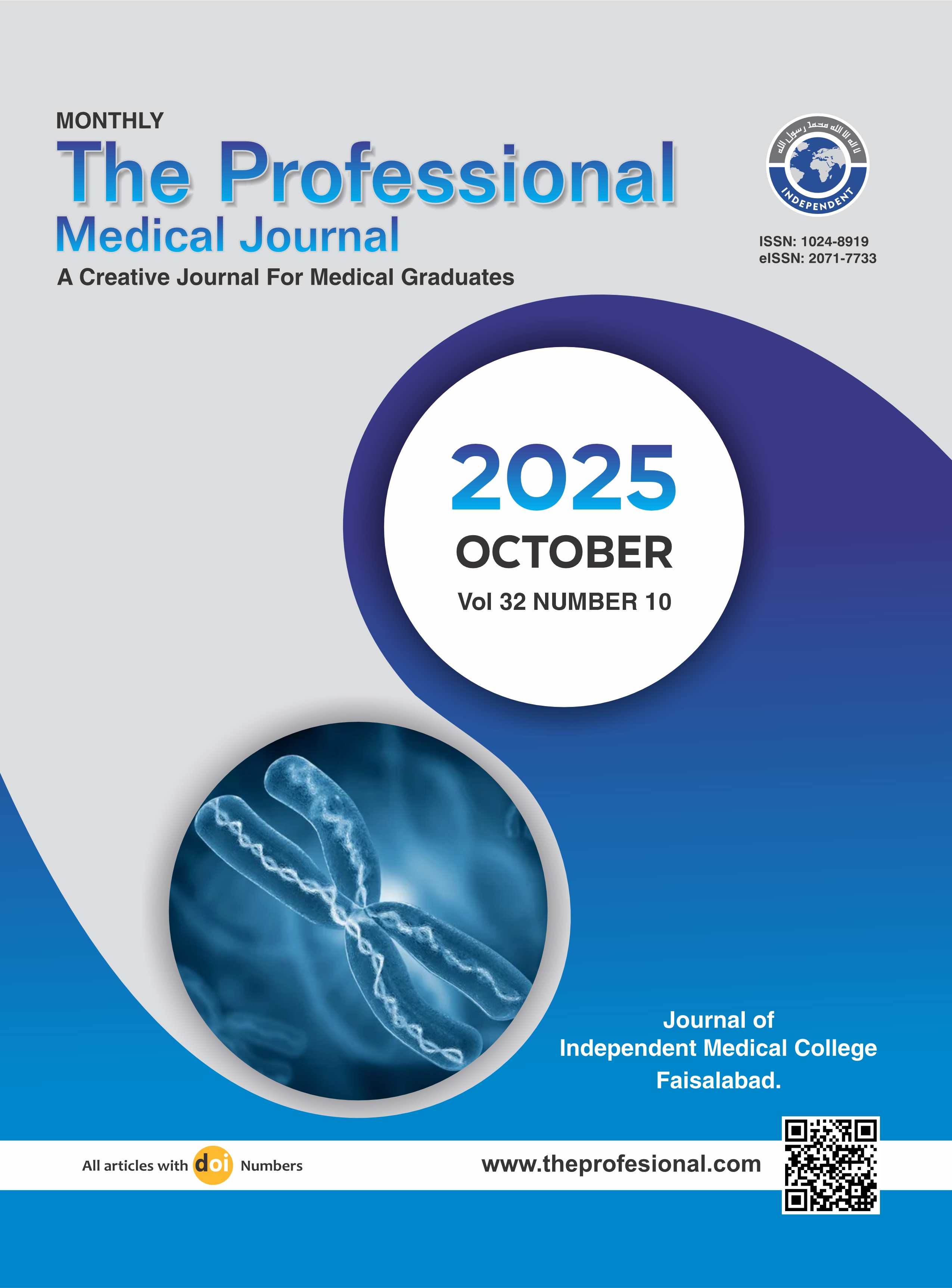Prevalence and risk factors of Type II diabetes under the age of 30 years in district of Faisalabad.
DOI:
https://doi.org/10.29309/TPMJ/2025.32.10.9842Keywords:
Blood Glucose, Hypertension, Obesity, Sociodemographic FactorsAbstract
Objective: To identify key sociodemographic and clinical factors associated with hypertension and obesity among adults using multivariate logistic regression. Study Design: Cross-sectional Survey. Setting: Allied Hospital, Faisalabad. Period: June 2024 to December 2024. Methods: Collected data on sociodemographic and clinical variables, including sex, residence, blood glucose type, age, smoking, and income. Logistic regression models assessed their associations with hypertension and obesity, with model fit evaluated via Deviance, Pearson, and Hosmer-Lemeshow tests. Results: The hypertension model was significant (p=0.023), with a deviance R-squared of 23.76%. Females had lower odds of hypertension (OR=0.113; p=0.006), while urban residents had over five times higher risk than rural residents (OR=5.125; p=0.023). Participants with fasting blood glucose were less likely to be hypertensive compared to those with random blood glucose (OR=0.243; p=0.021). The obesity model was also significant (p=0.006), with a deviance R-squared of 34.2%. Sex was the sole significant predictor (p<0.001), indicating males had a higher risk of obesity. Conclusion: Gender was a consistent predictor for both conditions, with male predominance. Urban residence and blood glucose type significantly influenced hypertension risk. These findings suggest the need for targeted interventions and emphasize the importance of fasting glucose monitoring in hypertension screening.
Downloads
Published
Issue
Section
License
Copyright (c) 2025 The Professional Medical Journal

This work is licensed under a Creative Commons Attribution-NonCommercial 4.0 International License.


